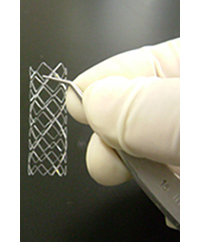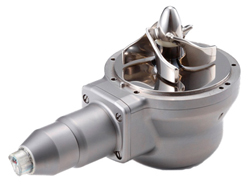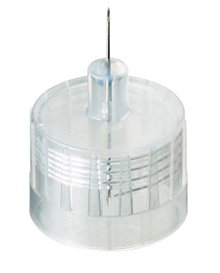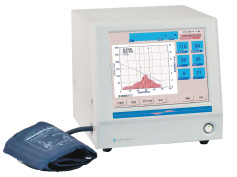niponica is a web magazine that introduces modern Japan to people all over the world.
2013 No.10

To read the e-book you need to have JavaScript enabled in your browser and a free Flash Player plug-in from Adobe Systems Inc. installed.
Quality with a Japanese Flair

Revolutionary Techniques
to Fight Disease
Japan's medical sector is aiming to help people live free of worrisome health issues, and is spreading new techniques to other parts of the world. Its medical devices and technologies are at the forefront of innovation.
Medical Devices from Japan Offer Less Pain, Less Hassle
Manufacturing dynamo Japan is applying its technologies to create some of the world's most advanced devices in the medical sector. Here is a sample of medical devices that take advantage of innovative and remarkably creative techniques. They are safe, easy to use, and less intrusive, too.
A winning treatment for constricted blood vessels: The bioabsorbable stent

The bioabsorbable stent (IGAKI-TAMAI ® STENT) is made from a polylactide material, making it good for patients who are allergic to metal inserts. (Photo courtesy of Kyoto Medical Planning Co., Ltd.)
When blood vessels become constricted and partially block the flow of blood, this is a sign of hardening of the arteries, which can cause a serious medical condition such as a stroke or heart attack. A mesh-like tube called a stent is inserted inside the constricted part of the blood vessel and expanded to restore blood flow. This method was developed in the 1980s.
Most stents have typically been made of metal, which can cause an ongoing antagonistic reaction in the blood vessel. This, in turn, may very well result in further hardening. To address this, a new material was developed for stents—it dissolves and is absorbed into the blood stream. The stent remains firm for more than half a year after being implanted inside the blood vessel, but then over the next two or three years it slowly breaks down and is eventually cleared from the body. This is a transformative development—unlike metal stents, the new type does not remain as a foreign object in the body for a long time, permitting treatment at the same location again if necessary. Another advanced feature: the new stent can easily include the addition of a medicinal agent.
The bioabsorbable stent is now being marketed in Europe for insertion in blood vessels in the lower limbs.
Live a normal life—
Now possible with next-generation heart assist system

The Evaheart pump is no larger than a small fist. The impeller equipped with swept-back vanes (40 mm diameter) uses centrifugal force to circulate the blood. A cable links the pump to an external controller that operates the system. (Photo courtesy of Dr. Yamazaki Kenji)
More than 250 heart patients in Japan are reported to be waiting for a heart transplant, and until they receive it they are attached to an artificial heart-assist system. These types of systems are being steadily improved in Japan, and a next-generation advance, the Evaheart, is a heart assist system developed by a project headed by Dr. Yamazaki Kenji. He is a professor at Tokyo Women's Medical University, and director of the Department of Surgery there. The main components of the Evaheart system are: a pump attached to the left ventricle of the poorly functioning heart to send blood through the main artery; external compact batteries and a controller to operate the system.
Patients using other heart assist systems may experience problems such as an erratic pump that forces them to remain in the hospital for a long time. The Evaheart avoids this with two distinctive features: its pump is highly reliable and durable thanks to a rotating impeller with swept-back vanes; and it is made with precision technology that helps prevent blood vessels from becoming blocked. So patients do not have to be hospitalized for a long time, and can go about their lives as they normally would.
A device to measure sleeping patterns

Slip the mat under your bedding, and Sleep Scan will monitor your sleeping patterns for you. (Photos courtesy of Tanita Corporation)
A surprising number of people are concerned about the quality of their sleep. If they are keen about monitoring their own health they may want a newly developed mat sensor that monitors and analyzes sleep quality in the home. It easily measures sleep duration and sleeping patterns, and its precision is similar to devices medical institutions use to examine similar factors.
Slip it under your bedding, flip the switch and lay down. While you are in bed it will automatically record your movements, breathing patterns and pulse. Then after your sleep, check the recorded data on your computer. The display tells you how deep you slept, your sleep cycles and more, giving you your sleeping patterns at a glance. The precision measurement technology brings another aspect to monitoring one's own health.
Pain-free injections, thanks to precision technology

The Nanopass II needle for diabetics' insulin injections, developed jointly by Okano Industrial Corporation and Terumo Medical Corporation. (Photo courtesy of Terumo)
Injections used to hurt mainly because of the thick needle. But when a Japanese company began marketing the world's thinnest hypodermic needle in 2005, the big surprise was: No pain! Before then, needles for inoculations and other medical purposes had a diameter of 0.4 mm, but the new needles were only 0.2 mm. Halving the diameter meant reducing the tip area to about a quarter. Medicinal solutions pass through a hole that has an interior diameter of 0.08 mm.
To facilitate injections through such a small needle, the needle tip is very thin but the base is larger. This design is possible thanks to a precision press manufacturing technique that rolls a super thin metal sheet into a cylinder. In 2012, a needle with an even thinner tip diameter—0.18 mm— began making life even easier for diabetics who must use needles daily.
A blood pressure monitor to indicate blood vessel condition

Using the same method as the blood pressure monitor, this digital blood pressure monitor for medical use, called Pasesa, displays numbers indicating maximum and minimum blood pressure, pulse, pulse pressure, and the extent of blood vessel elasticity. (Photo courtesy of Shisei Datum Co., Ltd., with the collaboration of RIKEN and the National Institute of Advanced Industrial Science and Technology)
Blood vessels lose their elasticity and arteries may harden as people age, or when substances such as cholesterol build up. This can cause a stroke or heart attack. Over the last few years a growing number of homes are using a digital blood pressure monitor, and now you can get a monitor that checks the condition of your blood vessels just about as easily.
A device that does this in about two minutes came on the market in 2011. Wrap the cuff around your upper arm to obtain readings for the artery at that location and the elasticity of your aorta, the largest artery in the body.
The device is useful as a tool to warn about possible hardening of the arteries, and will likely be instrumental in boosting awareness of health issues.


